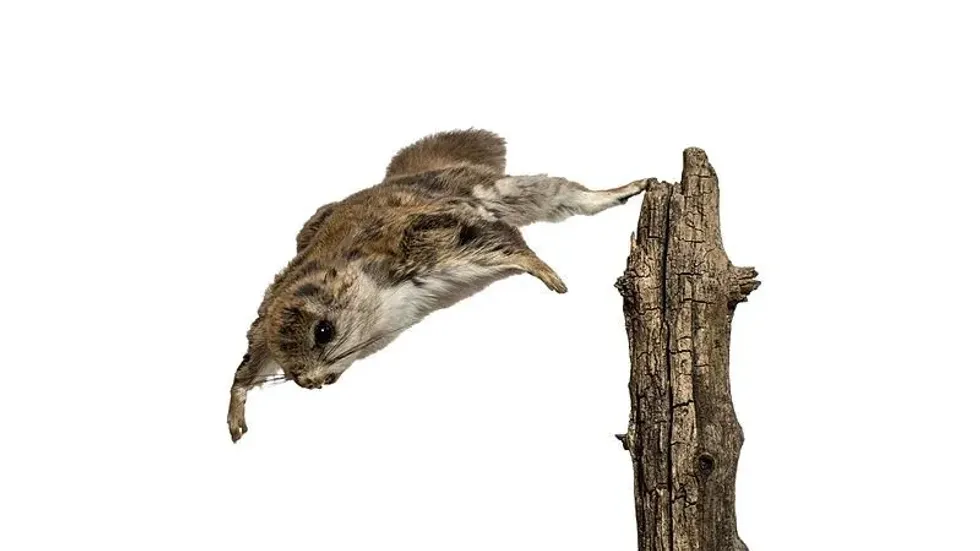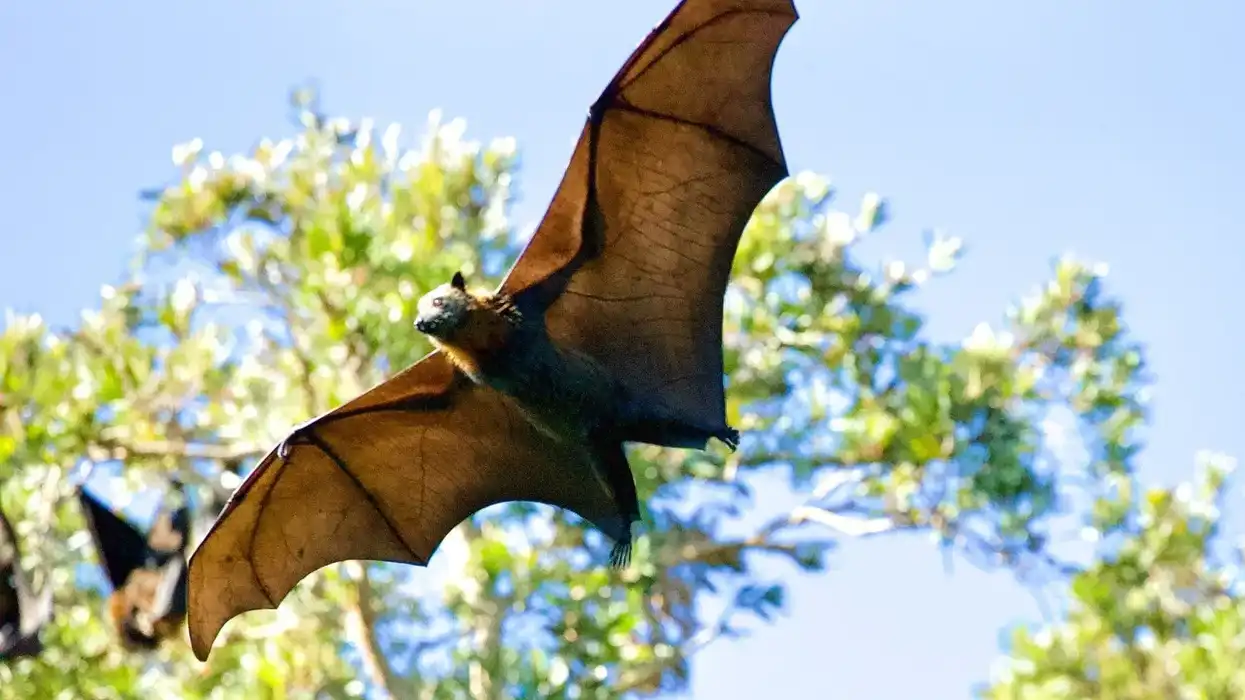The group of flying squirrels consists of many species and subspecies. The northern flying squirrel (Glaucomys sabrinus) is one such species of flying squirrels of the genus Glaucomys.
They are the smallest and the only aboral squirrel species found in North America. These squirrels do not have wings like bats and birds, they rather have a furry membrane that extends from the wrist of the forelegs and is attached to the ankles of the hindlegs.
They steer their movements by changing the directions of the legs and the tail acts as a brake. The squirrels' nest inside deep forests and is rarely seen by humans.
However, at present, their range is constantly decreasing as they are continuously losing their habitat. Deforestation and uncontrolled felling of trees is completely ruining the forests range in their natural habitat leaving the northern flying squirrels as an endangered species in the wild.
They also have numerous subspecies under them. To know more facts about these squirrels, keep on reading these amazing facts.
For similar content check out mongoose facts and stoat facts too.
Northern Flying Squirrel Interesting Facts
What type of animal is a northern flying squirrel?
The northern flying squirrel is one of the new world species of flying squirrels. The northern flying squirrel's scientific name is Glaucomys sabrinus.
What class of animal does a northern flying squirrel belong to?
Northern flying squirrels are warm-blooded animals of the Rodentia order and Sciuridae family that belong to the class of mammals or Mammalia.
How many northern flying squirrels are there in the world?
The northern flying squirrel (Glaucomys sabrinus) extends over a wide stretch in North America. For this reason, they do not fall under the threshold of vulnerable animals.
They are following a stable population trend in most parts of its range however, it is endangered in two parts. Two types of squirrels subspecies residing in the region of Appalachian Mountains are extremely threatened.
The U.S. Fish and Wildlife Service has determined that the North Carolina northern flying squirrels are endangered while the population of Virginia is recovering.
Formerly they were found inhabiting forests up to 500,000 acres of land which decreased to 200 acres in the later years. They are also highly endangered in Pennsylvania where only 33 individuals were found between 2003-2007.
The average population density has decreased in all the forests throughout the range owing to habitat destruction and pollution. Apart from that, parasites that infest the southern flying squirrels might also attack them.
Where does a northern flying squirrel live?
The northern flying squirrel's range is large and widespread. They are found throughout the southern part of the United States and extend up to the northern portions of North America.
In the north, the species are distributed throughout Alaska in the United States and across Canada. From there they enter the eastern provinces and extend up to the mountains of North Carolina and Tennesse in the south and Utah in the west.
The different subspecies of the northern flying squirrels are divided based on their places of occurrence. Some of those places are south California, eastern Tennessee, northeastern South Dakota, southern Utah, and western North Carolina.
A part of the distribution of the southern crowd around the Appalachians mixes with the distribution of the southern flying squirrels. However, the southern population is critically threatened.
What is a northern flying squirrel's habitat?
The northern flying squirrels are found in forests, especially in the coniferous, deciduous, and mixed coniferous or deciduous forests. They prefer cool and moist regions of old boreal forests. These flying squirrels inhabit beech-maple forests with trees like mixed hemlock, spruce, and firs in their habitat.
They are also found in diverse forests of white spruce and birch. Northern flying squirrels often live near marshes and swamps that provide them constant water supply.
Most of the squirrels populate areas near water. They are clumsy on the ground and spend their lives nesting in abandoned tree cavities or underground burrows. The nests become fully packed during the winter when numerous squirrels huddle together to form aggregations.
Who do northern flying squirrels live with?
The northern flying squirrels are gregarious animals that stay in family groups of eight individuals or more especially in winter. Their groups contain both adult and juvenile members. Some adult squirrels might also be found in solitude that joins a same-sex group only during the winter to stay warm.
How long does a northern flying squirrel live?
The average lifespan of the northern flying squirrels is short. They can live up to four years of age in the wild.
How do they reproduce?
The northern flying squirrels do not have any consistent mating partner, their partner changes every breeding season. Courtship and mating start in March and may continue to late May and in each season the female gives birth to one litter per year.
The squirrels breed in different places like an empty bird nest, woodpecker holes, and in clumps of twigs and moss.
The females give birth to up to five young in a single litter after a gestation period of 37-42 days. They take care of poorly developed newborns.
The eyes of the babies open after 31 days of their birth and they leave the nest after 40 days.
The entire process of weaning the babies lasts almost two months, although they might stay with the females for another month to learn the process of gliding through trees. The northern flying squirrels sexually mature at an average age of one year.
What is their conservation status?
The northern flying squirrels (Glaucomys sabrinus) have been listed as a species of Least Concern in the IUCN Red List. They have a wide range and are mostly stable however, in the southern Appalachians, two types of northern flying squirrels of North Carolina and Virginia are known to be endangered.
They are threatened by habitat loss and the lethal parasites of southern flying squirrels that might also infect the northern squirrel species.
The U.S. Fish and Wildlife Service has implemented certain plans to protect these two subspecies like exploring their ecology and protecting their habitats.
Northern Flying Squirrel Fun Facts
What do northern flying squirrels look like?

The northern flying squirrel (Glaucomys sabrinus) is a tiny squirrel that has a short body with a long and flattened tail. The long tail almost contributes to 80% of its total body length.
The large and round black eyes help them to see during the night. The small head ends in a pointed snout.
The upper part of the body is covered with thick cinnamon or light brown fur while the belly hairs have a dirty white tinge to them. The fur on the flanks looks grayish with white tips.
A furry membrane called patagium extends from the wrists of the front legs up to the ankles of the hind legs in this species which helps them to glide, unlike normal squirrels like the fox squirrel. Like all nocturnal animals, the flying squirrels cant be identified by their long whiskers and sharp teeth.
How cute are they?
In general, squirrels are cute. The pink nose and large eyes make the northern flying squirrels look very cute. Their babies have a very cute appearance that melts everyone's heart.
How do they communicate?
The northern flying squirrels (Glaucomys sabrinus) use different types of sounds in different situations to communicate with each other. The common northern flying squirrel sounds include soft low chirps and clucks when under stress. Apart from that, scent and touch also help them to communicate with each other.
How big is a northern flying squirrel?
The length of northern flying squirrels ranges between 9.8-14.5 in (25-37 cm). They are larger than the southern flying squirrels that measure 8.3-10 in (21-25.5 cm) in length. Compared to the giant flying squirrel, they are slightly smaller since the giant flying squirrel is 11 in–1 ft 9.5 in (28.5-55 cm) long.
How fast can a northern flying squirrel fly?
The flying squirrels do not actually fly, they glide through trees. So their flying speed or distance could not be determined.
How much does a northern flying squirrel weigh?
The weight of northern squirrels ranges from 3.9-8.1 oz (110-230 g).
What are the male and female names of the species?
The male squirrels are referred to as boars while the females are called sows.
What would you call a baby northern flying squirrel?
A baby squirrel is referred to as a pup or kit.
What do they eat?
The diet of northern flying squirrels mainly consists of plant matters and on rare occasions, they feed on living things. Their diet is similar to all squirrels. They primarily feed on nuts, acorns, fungi, and lichens. Supplementary diet might also include buds, fruits, saps, and occasionally insects and bird eggs.
Are they poisonous?
They are not poisonous and do not cause any health hazards. Rabies is a common disease that spreads from mammal bites, flying squirrels are not known to be the carriers of the disease.
Would they make a good pet?
Although they are wild animals they form pretty friendly pets. Taking good care of the wild animals make them affectionate to their owner. However, a northern flying squirrel pet is illegal in some parts of their range.
Did you know...
The special suit used by skydivers and base jumpers mimic the patagium of the flying squirrels.
Are flying squirrels dangerous?
The species of flying squirrels are not that dangerous. They are not much aggressive in nature and do not cause many problems to humans. Sometimes they nest inside houses that are not desired by humans.
Are they friendly?
Yes, the flying squirrels are friendly. They are highly social animals and they like to be with their companions.
Here at Kidadl, we have carefully created lots of interesting family-friendly animal facts for everyone to discover! Learn more about some other mammals from our fennec fox facts and peccary facts pages.
You can even occupy yourself at home by coloring in one of our free printable northern flying squirrel coloring pages.









